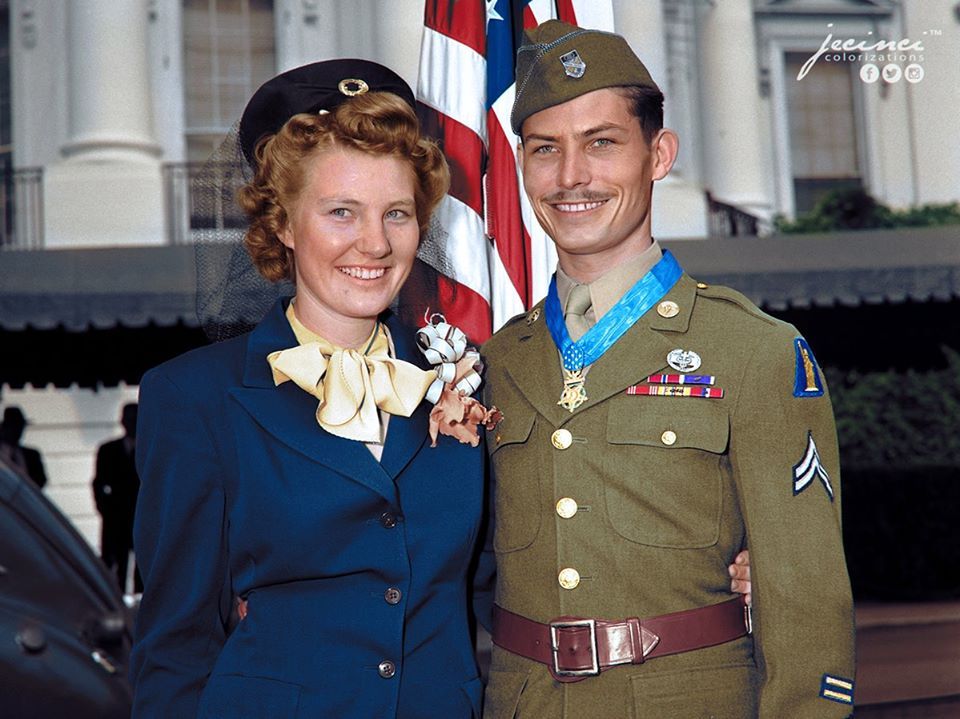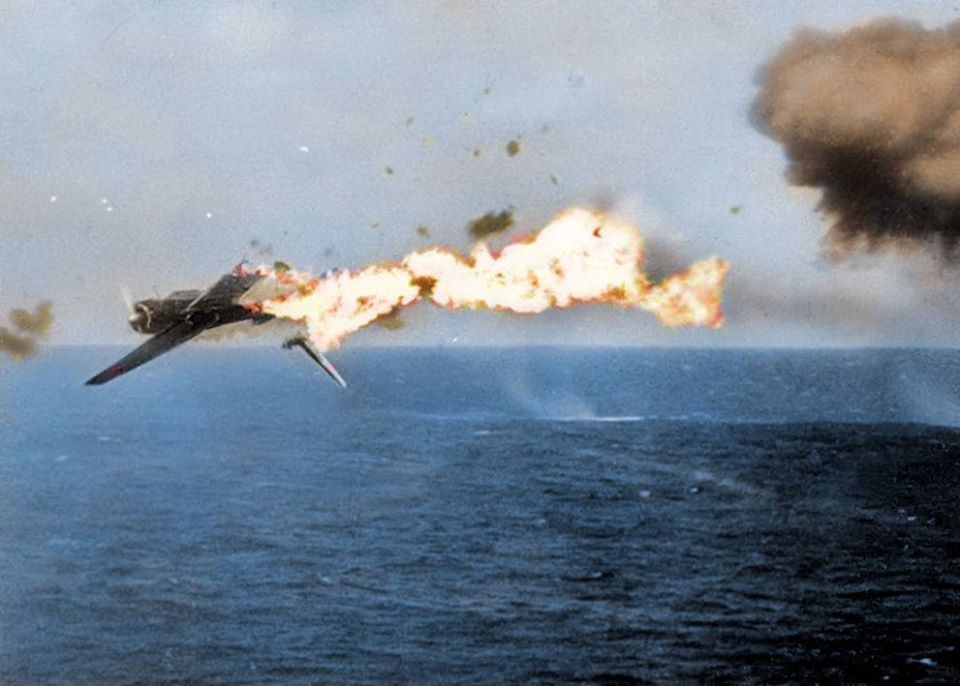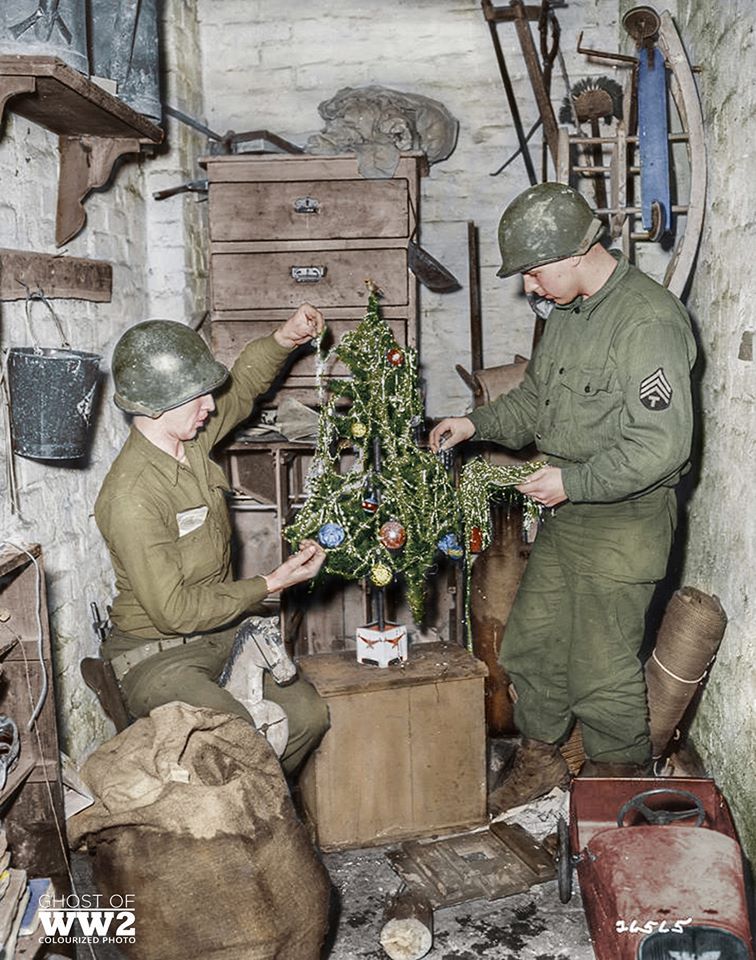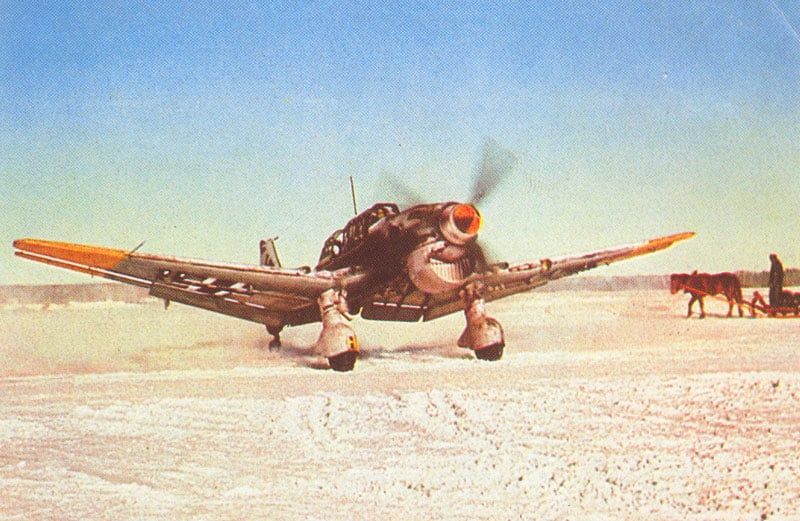yea is real surprising King didn’t convoy from the get go. USA did the same thing in WWI, not learning from their allies. A bunch of guys got slaughtered because of it.
On this day during W.W. 2
-
@captainwalker Great pic. The correct term in any event is from the century before Clausewitz; “Schwerpunkt”–the “point of maximum effort”, which correctly sums up the style of warfare and concentration better than Blitzkreig which describes the overall effect
-
And as a further point of terminology, the Schwerpunkt concept is an important component of the style of warfare which was used to conquor Poland in 1939 and the Low Countries and France in 1940, but it’s a component rather than a synonym. It refers to the concept of concentrating superior combat power at a decisive point of the front (such as the Ardennes in 1940), a concept which is valid both in mechanized and non-mechanized contexts. The style of warfare to which the term “Blitzkrieg” refers, however, is the use of massed formations of tanks, closely supported by mechanized / motorized infantry, self-propelled artillery and ground-attack aircraft, to punch through the enemy’s front lines, bypass strongpoints, and quickly penetrate deep into enemy territory to seize key objectives and to surround and isolate large groups of enemy forces. This general concept was actually considered by the Allies towards the end of WWI, as a way to “win the war in 1919” if they hadn’t already done so by then (which, in the end, they did). To be clear, however, what the Allies had in mind at the time wasn’t on the same scale as what occurred in 1939 and 1940, partly because they didn’t have the technology to do it (tanks at the time were mostly too slow, and the only reasonably fast one, the Renault FT, was too light), and partly because it wasn’t necessary (because their objective was to break the deadlock of trench warfare, not to overrun hundreds of miles of territory). Mechanized warfare, with close air support, was perceived to be the solution to what had been two of the fundamental problems of trench warfare: the vulnerability of infantrymen on the offensive to the weapons fire of an entrenched enemy, and the inability of artillery to keep up with advancing troops (especially across shell-cratered and/or muddly terrain).
-
9 October 1943
A Douglas-built B-17F-50-DL Flying Fortress, 42-3352, “Virgin’s Delight,” of the 410th Bomb Squadron, 94th Bombardment Group (Heavy), 8th Air Force, is over the Focke-Wulf Fw 190 fighter factory, Marienburg, East Prussia.
The aircraft commander was Lieutenant R.E. Le Pore and was based at Bury St Edmunds, Suffolk, England.
VIII Bomber Command Mission Number 113 was an attack by nearly 100 American heavy bombers on the Focke-Wulf Flugzeugbau AG aircraft factory at Marienburg, East Prussia (Malbork, Poland), where the Luftwaffe‘s Fw 190 fighter was being built. Early in the war, German fighter production had been dispersed and it was thought that Marienburg was beyond the range of Allied bombers.
100 B-17 Flying Fortress bombers were assigned to the target and 96 of these reached the plant. Between 1253 hours and 1302 hours, the B-17s arrived over the target in five waves at 11,000 to 13,000 feet (3,353 to 3,963 meters). They dropped 217.9 tons (197.7 metric tons) of bombs with a very high degree of accuracy.
During the mission, two B-17s were lost with 13 more damaged. Three airmen were wounded and 21 listed as Missing in Action. The bomber crews claimed 9 Luftwaffe aircraft destroyed and 2 probably destroyed in air-to-air combat. Target assessment estimated that 15 Focke-Wulf Fw 190 fighters were destroyed on the ground.
Casualties among the factory work force were high. Of 669 workers, 114 were killed and 76 injured.
This B-17 was shot down by fighters and crashed into the North Sea off the coast of Germany on the November 29, 1943 on a mission to Bremen, Germany. 8 KIA, 2 POW.
(Photo source - U.S. Air Force)
(Colorised by Mario Unger)

-
“Hacksaw Ridge”
Desmond Thomas Doss & his wife Dorothy
After receiving the Medal of Honor from President Harry Truman
October 12, 1945Desmond Thomas Doss
February 7, 1919 – March 23, 2006
United States Army orporal who served as a combat medic with an infantry company in World War II. After distinguishing himself in the Battle of Okinawa, he became the first conscientious objector to receive the Medal of Honor for actions above and beyond the call of duty. He is also the only conscientious objector to receive the medal during World War II.(Color by Jecinci)

-
November 13 1941. Battle of the Atlantic
The Aircraft Carrier Ark Royal was launched on April 13th, 1937 by Lady Maud Hoare, wife of Sir Samuel Hoare, then First Lord of the Admiralty. The bottle of champagne thrown against Ark Royal’s bows did not smash until the fourth attempt. She was commissioned on December 16th, 1938.
Displacing 22,352 tons standard and 28,143 tons fully equipped and capable of 31 Knots, she had the capacity to carry 60 to 72 aircraft. Ark Royal’s armament was designed with anti-aircraft warfare in mind, as aircraft were expected to be the main threat.
On November 13th, 1941, while returning to Gibraltar after taking aircraft replacements to Malta, she was attacked by German submarine U-81. The torpedo ripped a huge hole in Ark Royal’s hull and she immediately began to take on water, with a list to starboard, reaching 18° from centre within 20 minutes. The crew were ordered to abandon ship and although it was towed the list reached 45° before Ark Royal capsized and sank at 06:19 on 14 November. Able Seaman Edward Mitchell was the only fatality, killed when the torpedo from U-81 struck the ship.
Photo: Imperial War Museum. Colourised by DB Colour

-
Thanks for this excellent picture of a great ship’s demise. Earlier in 1941, Ark Royal famously launched the torpedo-bomber attack which jammed the Bismarck’s rudder, delivering the German battleship to the pursuing British naval units who otherwise would have failed to catch her.
-
@captainwalker Thank you. Enjoyed reading that.
-
The prevalence of captured ships in the pre-modern era and the need to sink hulks in WW1/WW2 is a great holdover from the Spanish Main and the Armada era
-
@captainwalker
Thanks captain Do you know what ship the picture was taken from ? -
hms hermione, legion, laforey, lightning or the tug thames is the short list. the tug was the last one with her
-
@barnee said in On this day during W.W. 2:
@captainwalker
Thanks captain Do you know what ship the picture was taken from ?From the light cruiser Hermione…
-
Mid-day on the 4 December 1943
A Japanese Nakajima B6N ‘Tenzan’ torpedeo bomber is hit by a 5 inch shell while attacking the USS ‘Yorktown’ aircraft carrier off Kwajalein Atoll, Marshall Islands, North Pacific.
Deck side account, “At 300 yards, the Jap plane took a shell in its left wing and flames spurted out. The pilot then veered to try to crash into the Yorktown, skimming the flight deck so close that the flames singed the beard of one of the Yorktown gunners. The plane finally crashed into the sea 100 yards close aboard and exploded in a ball of smoke and flame.”(Photo taken from the aft end of Yorktown’s flight deck, by Chief Petty Officer Photographer’s Mate , Alfred N. Cooperman)
(Colourised by Royston Leonard)

-
Sweet !!!
-
Great picture! The part about “skimming the flight deck so close that the flames singed the beard of one of the Yorktown gunners” brings to mind another kamikaze-related incident (this one from April 1945) in which a Japanese Zero crashed into the USS Missouri, an event involving two dramatic photos (shown in the links below):
A picture of the plane just as it’s about to hit the ship:
https://www.pinterest.ca/pin/465278205223784252/A picture of the one-in-a-million-chance aftermath, in which one of the plane’s machine guns ended up jammed down the barrel of one of Missiouri’s 40mm guns:
https://www.reddit.com/r/WTF/comments/7iv32k/uss_missouri_bb63_a_40mm_barrel_is_seen_impaled/ -
@CWO-Marc @SS-GEN @captainwalker Hose down the deck and clear the barrel for the next encounter, sailor!
-
@taamvan said in On this day during W.W. 2:
@CWO-Marc @SS-GEN @captainwalker Hose down the deck and clear the barrel for the next encounter, sailor!
Reminds me of a traditional three-part rule of thumb on shipboard conduct for enlisted sailors: if you see something, salute it; if it doesn’t salute back, pick it up; if you can’t pick it up, paint it.
-
Two U.S. Army infantrymen of the 84th Infantry Division decorate a Christmas tree in the cellar of a home in Geilenkirchen, Heinsberg, North Rhine-Westphalia, Germany. December 1944.
The division entered combat, 18 November 1944, with an attack on Geilenkirchen, Germany, as part of the larger offensive in the Roer Valley, north of Aachen. They were supported by the British Sherwood Rangers Yeomanry. Taking Geilenkirchen, as part of Operation Clipper on 19 November, the division pushed forward to take Beeck (Geilenkirchen) and Lindern in the face of heavy enemy resistance, 29 November.
After a short rest, the division returned to the fight, taking Wurm and Würm (Geilenkirchen), Mullendorf, 18 December, before moving to Belgium to help stem the German winter offensive (Battle of the Bulge).(Color Ghost of WW2)

-
Wishing everyone here a Merry Christmas!

-
Sweetness !
-
January 3, 1941. Eastern Front
German command problems continue on 3 January 1942 as the Red Army counteroffensive broadens. Already, two army group commanders and numerous generals such as Heinz Guderian have been sacked. The generals now are fighting over retaining control over units which the OKH and Hitler want to be transferred between commands. General Georg-Hans Reinhardt, commander of 3rd Panzer Army, refuses an order from General Adolf Strauß at Ninth Army, who has been given control over 3rd Panzer Army. The situation in Army Group Centre always has had these ad hoc commands, where one army is given command of another, but Reinhardt is upset about the refusal of Strauß to give him command over V Panzer Corps, which had been transferred to his sector. Army Group Centre commander Field Marshal Guenther von Kluge finally has to threaten Reinhardt with a court-martial if he does not obey Ninth Army’s orders. This is a prime example of the diva-ish behaviour that regularly breaks out within the upper ranks of the Wehrmacht.
Soviet troops are advancing on Rzhev, which had been far behind the front lines a few weeks ago. The Luftwaffe manages to operate despite -40 °F temperatures and flies in a battalion of reinforcements. The Germans have requisitioned winter clothing from the local inhabitants and learned ways to keep their machine guns and other automatic weapons working. This gives them a fighting chance to hold Rzhev, which is an important railhead and the entrance to the “land bridge” to Moscow.
Further south, Junkers Ju 87 Stukas of StG 77 attack Soviet shipping off the Kerch Peninsula. They bomb and badly damage Soviet cruiser Krasnyi Kavkaz. It is under repair until October 1942. On land, the Germans begin building up forces for a counterattack along a line about 10 miles west of Feodosia while the Soviet 51st, which has occupied the entire Kerch Peninsula, begins moving slowly west to reinforce the 44th Army. General Erich von Manstein, commander of 11th Army, sends 30 Corps under the command of Generalmajor Maximilian Fretter-Pico and also two other divisions from the Sevastopol perimeter to buttress the new line in the east. The Germans plan a counterattack as quickly as possible but it will take a couple of weeks to launch.
Source: worldwartwodaily







